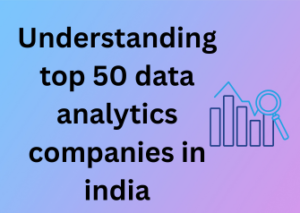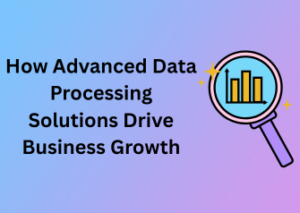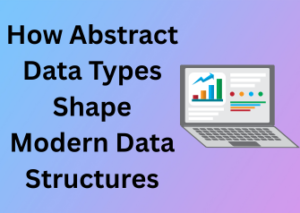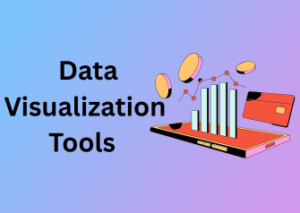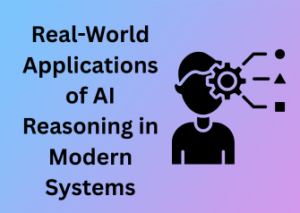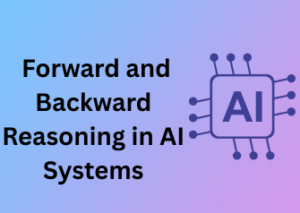Clinical trials have always been at the heart of advancing medicine and improving healthcare. Yet, the way we handle, process, and interpret the vast amounts of data generated has undergone a radical transformation over the years. Let’s take a friendly dive into how the evolution of data analysis in clinical trials has shaped modern medicine!
From Pen-and-Paper to Computers
Travel back in time just a few decades, and you’ll find researchers poring over stacks of paper, calculators in hand. Data collection was manual, prone to human error, and painfully slow. The advent of computers changed everything. Suddenly, data could be stored, retrieved, and analyzed much more efficiently.
Early software like SAS (Statistical Analysis System) gave researchers tools to uncover patterns in ways that were never possible before. This shift meant more accurate analyses and, ultimately, better-informed conclusions. Here’s a game-changing lesson: technology amplifies human effort when applied correctly.
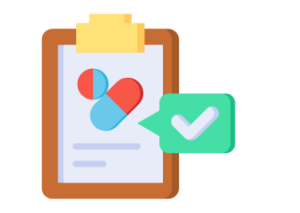
The Rise of Sophisticated Algorithms
As computational power grew, so did our ambition. Algorithms capable of detecting trends and patterns in massive datasets completely redefined what data analysis could offer clinical trials. These tools allowed researchers to spot anomalies, ensure compliance, and even predict outcomes faster than traditional methods ever could.
“Better algorithms demand one thing: clean, reliable data. For every whiz-bang tool, the quality of input remains the king,” as experts rightly say!
Changing the Scale: Big Data & Automation
Fast forward to today, and clinical trials are drowning—in the best way possible—in data. Advances in genomics, wearable health devices, and electronic medical records contribute more information than we ever imagined. While overwhelming in its scope, this era of “big data” has empowered researchers to ask bigger questions and seek deeper insights.
Modern automation tools, paired with data pipelines, now process this sea of information in near real-time. Automation eliminates tedious manual tasks, saving time and minimizing errors. However, thoughtful oversight remains critical—it’s all about combining the speed of technology with the vigilance of human experts.
The Human Element: Collaborative Innovation
Of course, data analysis has evolved alongside the collaboration between clinicians, biostatisticians, and data scientists. With shared expertise, data storytelling has become a powerful tool. Teams working together ensure insights are understood not just in statistical terms, but as actionable clinical narratives.
- Clinicians contribute practical knowledge of diseases and treatments.
- Data specialists ensure accurate collection, cleaning, and processing of complex data.
- Statisticians analyze and validate results, ensuring scientific rigor.
When this collaboration clicks, breakthroughs in treatment options and patient care follow close behind!
The Role of Statistical Models in Shaping Clinical Insights
Have you ever stopped to think about the science behind some of the medical breakthroughs we celebrate today? Much of it is powered by statistical models! These unsung heroes might not get the spotlight they deserve, but their role in clinical trials is absolutely vital. Let’s explore what makes these models so powerful, why they matter, and how they’re shaping modern medicine in ways many may not realize.
What Are Statistical Models? A Simplified View
At their core, statistical models are like number-driven storytellers. They analyze massive amounts of data and provide insights that help researchers and clinicians make evidence-based decisions. Whether it’s identifying trends, estimating outcomes, or determining whether a treatment is effective, these models are at the heart of it all. And trust us — the data involved in clinical trials is no small feat to handle!
Why Statistical Models Are Crucial in Clinical Trials
In clinical trials, accuracy is not just “nice to have” — it’s critical. Here’s why statistical models are irreplaceable in evaluating treatment data:
- They ensure objectivity: Bias has no place in meaningful medical research, and statistical models ensure conclusions rely on hard, precise data — not human guesswork.
- They reveal hidden patterns: Sometimes, important insights aren’t immediately apparent. Models can sift through complex, seemingly unrelated data points to uncover surprising connections.
- They enable predictive insights: Once data is analyzed, these models can give researchers valuable foresight into how effective a treatment could be under different circumstances.
Without these tools, medical professionals would have to rely on far less reliable methods or simply trust instinct. Clinical insights, as crucial as they are, demand better than that.
How Statistical Models Bring Data to Life
What’s fascinating about statistical models is that they make sense of the chaos. Data from patients, treatments, and monitoring systems can be overwhelming. It might look like an endless sea of numbers to most of us! But here’s where models work their magic: they turn raw data into actionable results. For example:
- Statistical methods help manage variability in patient outcomes. No two patients are exactly the same, but models can help researchers focus on the treatment’s true effect, filtering out noise like random differences.
- They guide decision-making by assessing the “statistical significance” of results. Is the treatment truly working, or could those results just be a fluke? These tools give researchers confidence in their findings.
- They support risk-benefit analysis. By crunching the numbers, statistical models can help weigh treatment risks against expected benefits, helping determine if a medication is ready for the next stage of approval.
Bringing It All Together
If clinical trials are a puzzle, statistical models are the map guiding researchers toward the big picture. They transform data from a random stream of numbers into scientifically sound conclusions. More importantly, they help ensure safety, reliability, and confidence at every step of the process.
Advice for Modern Researchers
Want to get the most out of statistical models? Here’s what experts recommend:
- Understand the basics: You don’t need to be a statistician, but grasping the key concepts behind these models can enhance your ability to lead informed discussions.
- Collaborate with specialists: Statistical experts are invaluable team members. Lean on their expertise to make sure analyses are as robust as possible.
- Don’t overlook limitations: Even the best models can’t work miracles. Context still matters — always anchor results in real-world applications.
Addressing Bias and Ensuring Data Integrity
Clinical trials are a cornerstone of advancing medical research, but as in all fields involving data, they come with a host of challenges. Among the most significant are addressing bias and ensuring data integrity. These issues can skew results, impact patient safety, and delay the approval process for life-changing treatments. Let’s explore what these challenges entail—and how we can tackle them effectively.
What Is Bias, and Why Does It Matter?
Bias in clinical trials refers to any factor that distorts the results, creating a false picture of a treatment’s effectiveness or safety. It can creep in during patient selection, data collection, or analysis. For example, imagine if a study were to compare the efficacy of a new drug, but most participants came from a single demographic group. That bias would limit the applicability of the findings to a broader population.
The real danger of bias lies in its potential consequences. A biased study may lead to incorrect conclusions, causing ineffective or unsafe treatments to reach patients or valuable therapies to be disregarded altogether. That is why actively identifying and minimizing bias is a critical component of any robust clinical trial.
How to Reduce Bias in Clinical Trials
Thankfully, there are tried-and-tested strategies for minimizing bias:
- Randomization: Assigning participants to treatment or control groups at random helps eliminate selection bias. This ensures that no group is more—or less—likely to receive a particular intervention purely by chance.
- Blinding: When participants and researchers don’t know who is receiving the actual treatment versus a placebo, it reduces the risk of subjective biases affecting data collection or interpretation. Double-blind studies are considered the gold standard for this reason.
- Diverse recruitment: Enrolling participants from different demographics, geographic areas, and health backgrounds helps generate results that are representative of the population as a whole.
These methods, while foundational, require rigorous adherence to ethical and procedural standards throughout the trial to truly deliver unbiased results.
Ensuring Data Integrity: Why and How
Data integrity is all about maintaining the accuracy, consistency, and reliability of information throughout the trial process. It’s not just nice to have—it’s a regulatory requirement in most countries to ensure that results can be trusted and verified. If bias affects results, poor data integrity can make them outright invalid.
Steps to Guarantee Data Integrity
- Audit Trails: Using electronic data capture systems with in-built audit trails ensures that any changes made to the data are fully transparent. This reduces the risk of undetected tampering or errors.
- Standardized Protocols: Following consistent procedures for data collection and management ensures that results are comparable across multiple centers or teams. This is particularly important in large, international trials.
- Quality Assurance Checks: Conducting regular reviews and cross-checks throughout the trial can catch errors or inconsistencies early. A robust quality management system (QMS) is invaluable here.
Beyond these technical measures, fostering a culture of accountability and transparency within research teams is equally important. Everyone involved—clinicians, statisticians, data managers—must be committed to upholding these standards.
The Power of Visuals in Clinical Trial Decision-Making
Let’s face it—data on its own can be intimidating, especially when you’re staring at walls of numbers and complex statistical models. Clinical trials generate vast amounts of intricate data, and interpreting all that information efficiently is essential for making life-saving decisions. That’s where data visualization comes to the rescue: transforming abstract data into tangible, understandable visual formats. But there’s more to it than pretty graphs and colorful charts—visuals can profoundly influence the direction of clinical decisions.
Bringing Data to Life
Visualizations serve as a bridge between numbers and meaning. In clinical trials, stakeholders—ranging from researchers to healthcare professionals—need to quickly grasp what the data is saying. A well-designed visualization can turn raw statistics into clear narratives. Whether it’s a line graph tracking the patient response to a new drug or a heat map highlighting adverse event patterns, these tools clarify trends and outliers that are otherwise buried in spreadsheets.
For instance, imagine you’re presented with a table showing adverse event rates across different demographics. Now picture that table turned into a bar chart with each demographic represented by distinct, easy-to-notice color coding. Suddenly, those numbers aren’t just numbers—they’re a story. The latter interpretation could spark questions like: “Why are events higher in this subgroup?” and “Should we reevaluate the dosing strategy for this population?”
Better Decisions, Faster
The healthcare industry thrives on precision, but it also moves on urgency. Clinical trials, in particular, operate under tight timelines. By presenting key insights visually, teams can cut down the time spent poring over raw data, allowing them to focus on what’s important—making decisions. Visualizations are the difference between spending hours evaluating adverse event statistics versus spotting the problem immediately through a dynamic pie chart.
Moreover, they promote better cross-functional communication. Not every stakeholder is a data scientist or a trained clinician, which makes visual storytelling essential for keeping everyone on the same page. A clear graph can communicate trial progress to both the lab technicians in charge of collecting data and the executives funding the study.
Steering Decisions with Skill (and Caution!)
That said, not all visuals are created equal. Poorly designed, misleading, or overly complicated charts can drive the wrong conclusions. For example, axes scaled incorrectly or the use of disproportionate 3D graphics can distort the data and mislead viewers. This makes expertise in choosing the right visualization method critical. A good rule of thumb? Simplicity and clarity always win. Stick to a format that serves the data, not one that’s just visually appealing.
Interactive visualizations, such as dashboards with filters and drill-down options, are becoming increasingly popular. These tools allow researchers to dive deeper into the specifics of their data while still staying tethered to the big picture. But alongside their growing usage comes a golden rule—you need to validate those visual tools to ensure accuracy and honest representation of trial data.
Understanding the Fusion of Machine Learning and Traditional Analytics in Trials
When you think of clinical trials, your first thoughts might include rigorous processes, hefty data sheets, and tons of statistical analysis. But hold on — modern clinical trials are no longer just about traditional statistics. Enter the exciting realm of machine learning (ML), a game-changer that’s shaking up analytics. Today, we’re exploring how combining machine learning with traditional analytics creates a powerful duo that can transform the way we approach clinical research.
What Makes This Fusion Special?
In short: balance and optimization. Traditional analytics has long been the bedrock of clinical trials, offering tried-and-true statistical models, randomization techniques, and carefully curated datasets. On the other hand, machine learning brings speed, pattern recognition, and a level of predictive ability that humans alone could never match. When these two methods converge, you’re left with systems capable of deeper, faster insights into trial data.
The Real Impact: Supercharging Efficiency and Accuracy
What does this fusion mean in real-world trials? Here are a few ways this powerful partnership is making waves:
- Enhanced Predictive Modeling: Gone are the days of only relying on rigid pre-built statistical models. ML can create dynamic, responsive models, predicting clinical outcomes with impressive accuracy by continuously learning from evolving data.
- Faster Patient Recruitment: Trials often face delays due to tough recruitment processes. Machine learning shines here, combing through datasets to identify potential participants faster and ensuring that inclusion criteria are met more efficiently.
- Personalized Medicine: Traditional analysis focuses on large-scale trends, but ML can drill deeper, identifying patient subgroups and potential treatments tailored to their specific genetic or biological markers.
Overcoming Challenges Along the Way
Of course, no innovation is without hurdles. The fusion of ML and traditional analytics does bring its fair share of challenges:
- Data Quality: Machine learning algorithms are only as good as the data they’re fed. Ensuring clean, unbiased, and comprehensive datasets is essential for success.
- Interpretability: ML models, like neural networks, can sometimes operate in black-box mode, making their results hard to explain. This can be tackled by improving transparency and communication between data scientists and clinical professionals.
- Regulatory Hurdles: Regulatory bodies are still catching up with integrating machine learning into clinical research workflows. Navigating this landscape requires patience and strong evidence of methods’ reliability and value.
Overcoming Common Challenges in Clinical Trial Analyses
Clinical trials are the backbone of advancing medical science, unlocking powerful insights into treatments and patient care. But let’s be honest—running these trials and analyzing their data isn’t exactly smooth sailing. Challenges in clinical trial analyses can feel like a game of whack-a-mole: tackle one issue, and another seems to pop up. But don’t worry, this isn’t all doom and gloom! Let’s break down some of the most common bumps in the road and how to overcome them with smarter strategies and a bit of grit.
1. Missing Data: The Sneaky Culprit
Have you ever been knee-deep in an analysis, only to realize half the puzzle pieces are missing? Missing data is hands-down one of the most frequent headaches in clinical trials. Whether it’s participants dropping out of studies or incomplete data entries, these gaps can seriously skew results.
- Solution: Use statistical approaches like multiple imputation or maximum likelihood estimation to account for the missing data. A little preparation during trial design—such as emphasizing clear communication with participants—can also minimize dropouts.
- Pro Tip: Don’t ignore the patterns in missing data. Recognizing whether data is missing at random or not can influence the method you use to address it.
2. Handling Complex and High-Dimensional Data
These days, clinical trials often generate massive volumes of data, thanks to advanced technologies like genomics and wearable devices. While it’s exciting to work with such robust datasets, the sheer complexity of analyzing high-dimensional data can make even seasoned analysts scratch their heads.
- Solution: Employ dimensional reduction techniques like principal component analysis (PCA) or t-SNE to simplify without losing critical information. Collaborate with bioinformatics experts when data is really heavy-duty.
- Pro Tip: Keep your analysis objectives front and center. Not every datapoint contributes equally—you don’t need every bell and whistle to get clear results.
3. Managing Operational and Regulatory Constraints
Clinical trials exist in a highly regulated environment, and rightfully so—patient safety and ethical transparency are non-negotiables. But these regulations often introduce stringent reporting requirements, timelines, and data collection constraints, adding layers of complexity to your analysis.
- Solution: Always ensure that your data management practices comply with regulatory standards like Good Clinical Practice (GCP) and CDISC formats. Consistent documentation and validation of your workflows can save you a ton of headaches down the road.
- Pro Tip: Use automation tools where possible to streamline routine reporting and reduce human error—this makes staying compliant *way* easier.
4. Interpreting and Communicating Results
A clinical trial analysis isn’t worth much if the results can’t be easily understood or acted upon. Communicating findings to diverse stakeholders—scientists, healthcare providers, and sometimes even the general public—can be challenging, especially when dealing with complex statistical outputs.
- Solution: Invest in clear and intuitive data visualizations that highlight the key takeaways. Think charts, graphs, and dashboards rather than drowning stakeholders in tables of raw data.
- Pro Tip: Tailor your message depending on your audience. What resonates with a statistician might not make sense to a clinician or policymaker!
5. Striking the Balance Between Speed and Accuracy
The demand for faster, more efficient clinical trials is rising, but rushing analyses increases the risk of errors. It’s a classic balancing act: How can you be quick without compromising quality?
- Solution: Leverage data automation tools and pre-validated workflows to minimize delays. At the same time, ensure regular quality checks are part of your process.
Shaping Tomorrow’s Clinical Strategies Through Current Data Trends
Let’s dive into a fascinating world where cutting-edge data trends are reshaping the future of clinical trials. It’s an exciting time to be part of such a transformative journey! These trends are more than just buzzwords – they’re setting the stage for precision medicine, personalized therapies, and a more patient-focused approach to healthcare. Shall we explore?

The Power of Predictive Analytics
Today’s clinical strategies aren’t just reactive – they’re becoming predictive! With the rise of predictive analytics, researchers can forecast outcomes and patient responses even before launching a trial. Imagine having the ability to anticipate potential roadblocks or the success rate of a medication. That’s precisely what we’re seeing thanks to advanced data modeling techniques and artificial intelligence (AI).
For instance, utilizing historical data allows teams to pinpoint which patient demographics might benefit most from a certain drug. This reduces the guesswork and ensures trials are more focused, efficient, and cost-effective.
Patient-Centric Data Collection: The Future is Now
Clinical trials are no longer just about numbers and graphs – they’re about real people. Thanks to wearable devices, mobile apps, and electronic health records (EHRs), we can now gather insights directly from patients in real time. This influx of patient-centric data ensures strategies are designed with their needs in mind.
Pro Tip: Implementing tools like smartwatches and fitness trackers in trials not only improves data accuracy but also makes participation more engaging for patients. Who said clinical trials couldn’t be a bit tech-savvy?
Rise of Real-World Evidence (RWE)
Real-World Evidence is no longer second fiddle to traditional clinical trial data. It’s rapidly becoming a cornerstone in shaping tomorrow’s strategies. Why? Because it reflects what happens in the actual world, not just the meticulous confines of a controlled trial.
- Think of RWE as the bridge between clinical data and practical application.
- For example, RWE can reveal how a medication performs across varied populations, geographies, and environments.
- Incorporating RWE ensures trials are designed with a broader scope, enhancing their applicability to everyday healthcare.
Ethical AI and Data Governance: The Backbone of Progress
Data has immense power, but with great power comes great responsibility. As new trends like AI and machine learning take center stage, ethical data practices are forefront. It’s not just about crunching numbers – it’s about doing so responsibly and transparently.
- Adopt clear policies to ensure patient data privacy.
- Use explainable AI (XAI) to make complex algorithms understandable to stakeholders.
- Regularly audit data processes to prevent biases or inaccuracies from creeping in.
A Collaborative and Adaptive Future
Collaboration is the secret sauce to staying ahead of the curve. By fostering partnerships between pharmaceutical companies, regulators, and technology firms, we can ensure that emerging trends aren’t siloed but are instead woven into a cohesive framework. Adaptive clinical trial designs are an excellent example here – they allow for mid-trial modifications based on incoming results.


